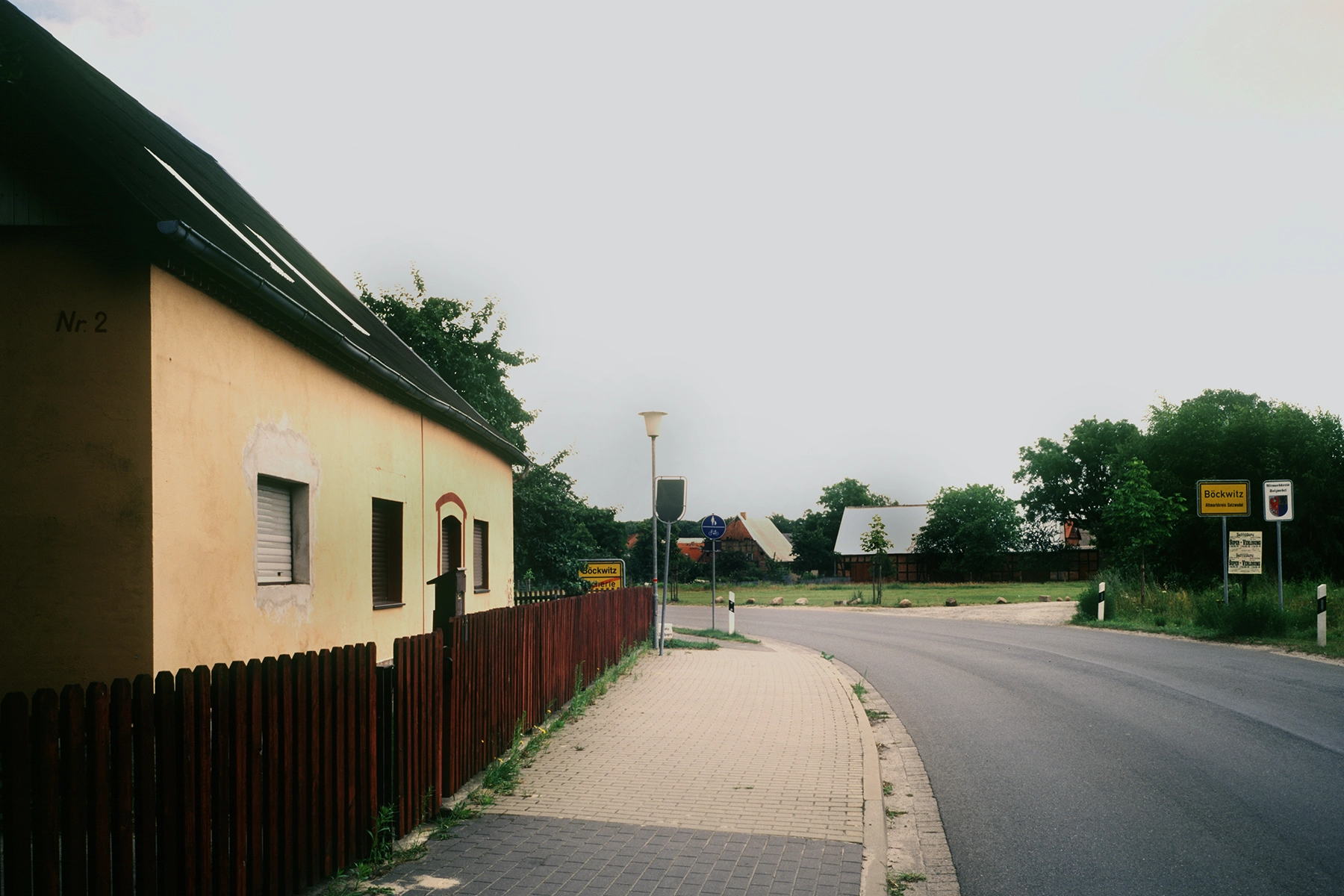Kurz vor der Schmerzgrenze (Just before the pain threshold) was the title of the article in the 20th issue of Stern magazine 1983, which showed eight photographs by Joachim Giesel. Between 1965 and 1989, the photographer repeatedly traveled to the inner-German border, to the so-called Zonenrandgebiet. There he documented the extinction of once populated areas from a West German perspective in a large number of photographs. Thus, the motifs show decaying estates, disused railroad tracks, fields overrun with weeds, closed roads, closed ferry ports, as well as guard posts, fences, borders and border crossings. In his photographs, Giesel captured the desolation of once existing connections: both in landscape terms and politically. For the inner-German border also separated people from one another. This is impressively captured in a photograph taken in Kaiserwinkel in 1982. The road that connected the village with nearby Jahrstedt on the eastern side is now closed and secured by a ditch. Where a human was not allowed to pass, where families were separated from each other, a white goose family crosses the dividing line.
In the context of the exhibition at the Museum für Photographie in Braunschweig: Schöne Neue BRD? Autorenfotografie der 1980er Jahre (2014), Gisela Parak classifies Joachim Giesel’s work as one of ten important positions of “Autorenfotografie”. In the sense of the term coined by Klaus Honnef, Parak describes auteur photography as “a memorable label for the new photographic orientation of the 1980s (…), which is to be understood as an examination and representation of social and political themes characterized by the photographer’s subjective point of view and emotional state, and which at the same time appeals to a new responsibility of the photographer for the content and handling of photography” (Parak 2014, n. p.). Joachim Giesel’s borderlands series “vividly portrays the division of Germany and the impact of the military cordoning off of the border strip on the bordering village-rural cultural landscapes. In the villages, which now end as dead ends, the series captures the desolation, isolation, and mood of decline of the towns, which have sunk into insignificance as a result of their border location, in stark contrast to the idyllic appearance of the landscapes captured in color” (Parak 2014, n. p.).
Giesel’s photographs were on view at the Landesbildstelle photo gallery in Hamburg in 1980 and were part of another exhibition at the Museum für Photographie in Braunschweig in 2015, Das regionale Gedächnis (The Regional Memory). Together with Dieter Bub and a camera team from NDR, the photographer traveled along the former border between Lübeck and Hof in 2012 and remembers (Nordstory, Grenzgeschichten). During this trip, Giesel placed the camera in the same position as before the border was opened, creating a chronology of the zonal border area from the 1960s to the present.









